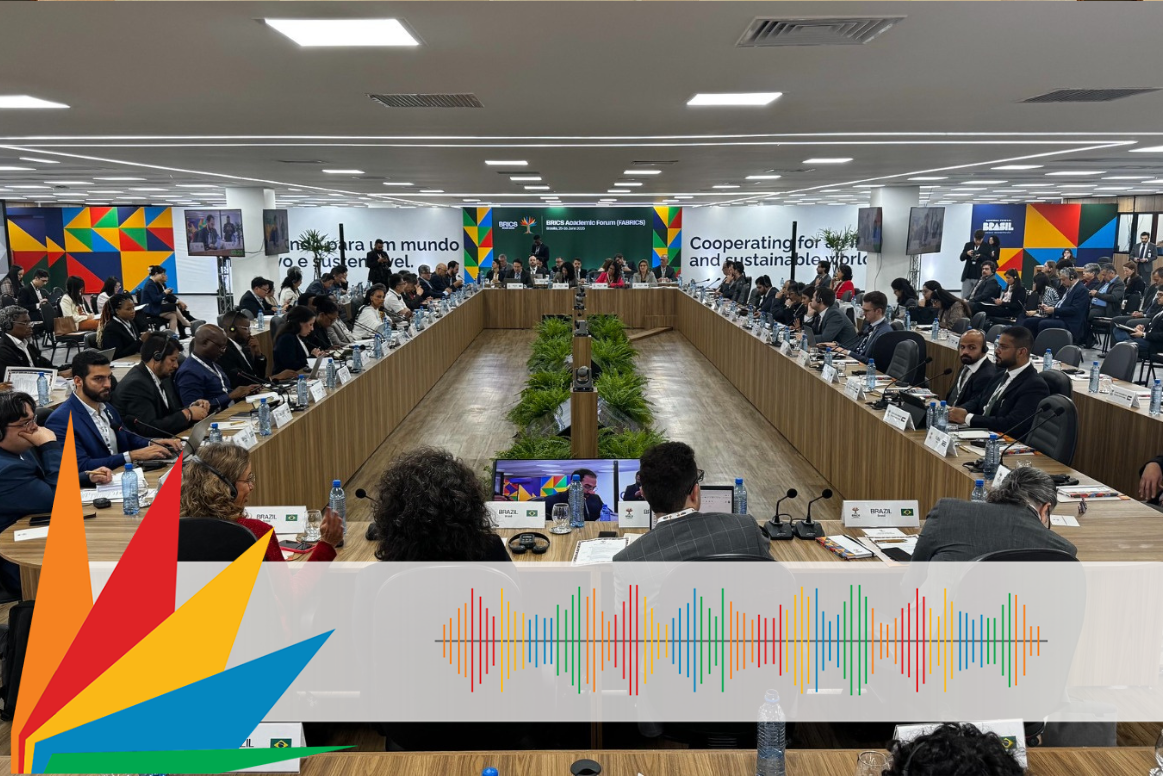BRICS Brasil Bulletin #18 – BRICS Academic Forum Unveils Groundbreaking Portfolio Mapping 180 Cooperation Mechanisms within the bloc
The document compiles key initiatives implemented over the years, aiming to strengthen the bloc’s governance and serve as a reference for countries that have recently joined BRICS or are considering membership in the future. Listen to the report to learn more

Reporting: Leandro Molina / BRICS Brasil
Reporter: The 17th BRICS Academic Forum was held in Brasilia, bringing together experts from research centers responsible for developing policy proposals and public policy analysis. Over two days of activities—coordinated by the Institute for Applied Economic Research (Ipea)—the work centered on six priority areas. Luciana Servo, President of Ipea, highlighted the strategic role of BRICS as a platform for collaboration among Global South countries.
Luciana Servo: Countries around the world share many common challenges. Take the COVID pandemic, for instance. Did all countries have the capacity to produce COVID vaccines? No. So we needed global cooperation to get them. Within the BRICS cooperation model, there’s room for technology transfer and joint discussion on access. For instance, we had vaccines from China being used in Brasil. That’s a concrete example of what cooperation makes possible.
Reporter: One of the forum’s main outcomes was the approval of the BRICS Cooperation Mechanisms Portfolio, developed by the BRICS Think Tank Council under Ipea’s coordination. The portfolio presents a first-of-its-kind mapping of 180 cooperation mechanisms developed by member countries since the bloc’s founding.
Keiti da Rocha Gomes: This portfolio is a map of all existing BRICS initiatives—something that’s never been done before. When we began reviewing the available efforts, we found more than 180 initiatives. Under Brasil’s leadership, we’re working with the group to map out what each of these mechanisms represents, which institutions are involved, which ministries—on the Brazilian side—and which institutional actors participate in other countries, how much progress has been made, and what the key challenges are. In short, we’re building a snapshot of what constitutes BRICS based on its mechanisms.
Click to view the Portfolio of Cooperation Mechanisms
Reporter: The discussions revealed key points of convergence among BRICS members. Dr. Samir Saran, President of the Observer Research Foundation in India, drew parallels between the trajectories of the two countries.
Samir Saran: What I’m trying to say is that both of our countries are working for the masses. That’s why technology that uplifts large populations is a priority for both Brasil and India. Two decades ago, you had Bolsa Família, a social program designed to uplift entire communities, towns, cities, and villages. We’ve lifted 200 million people out of poverty over the last 20 years. If you compare the Brazilian and Indian agendas, you’ll see there’s not much difference.
Reporter: Sarah Mosoetsa, CEO of the Human Sciences Research Council in South Africa, emphasized the practical nature of cooperation within BRICS.
Sarah Mosoetsa: We know that Brasil and South Africa have a lot in common—but so do India and Russia. I think this is our way of telling the world that our collaboration goes beyond talk. It’s about practical action and the ideas we share. BRICS offers a tangible opportunity for hope.
Reporter: The BRICS Academic Forum consolidates recommendations that will be presented to the bloc’s leaders during the summit on July 6–7, in Rio de Janeiro.
English version: Tadeu Azevedo (POET/UFC)
Proofreading: Luana Ferreira de Freitas (POET/UFC)